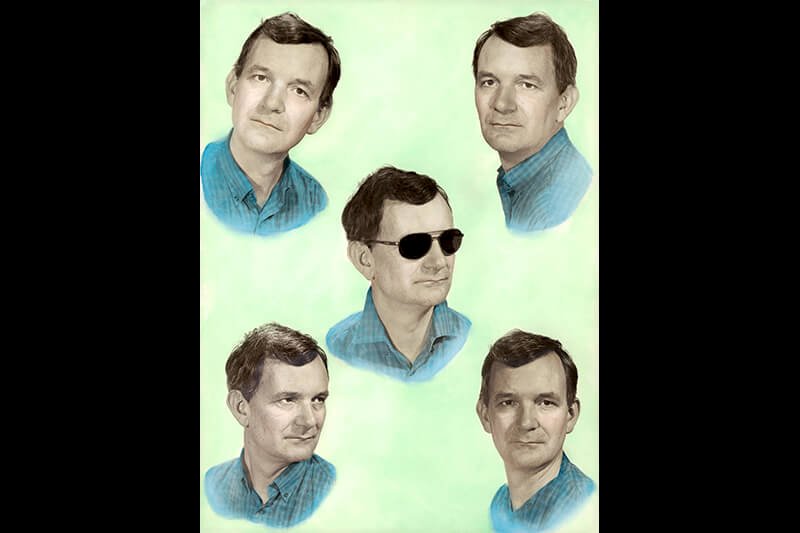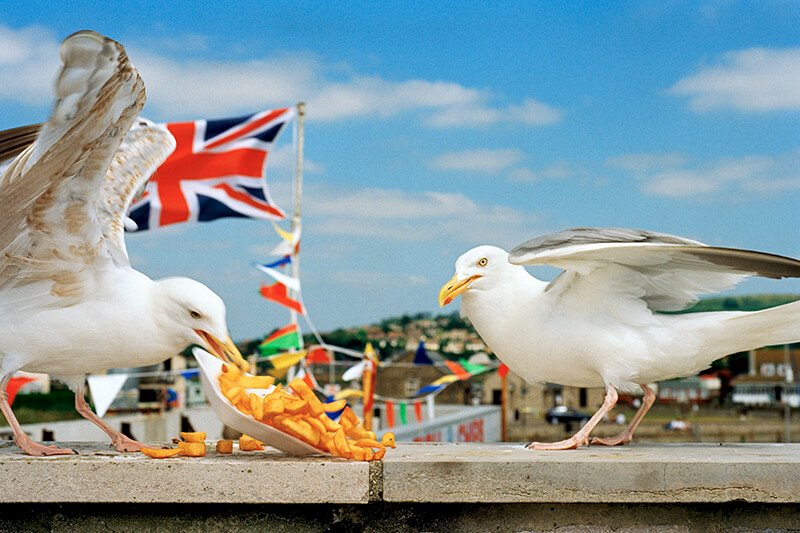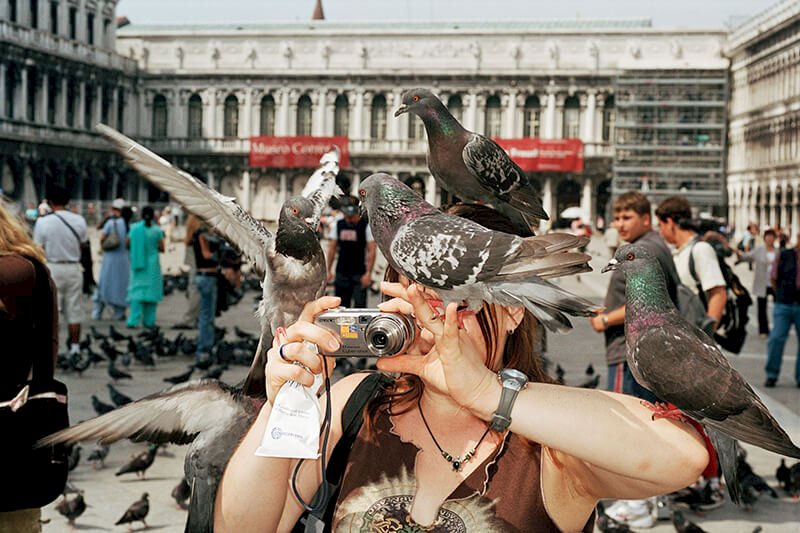In this post I reflect on Jon McNaught’s work. A printmaker and illustrator from England, he uses screen-printing and lithography to create miniature images and silent narratives, depicting quiet moments from everyday life in small, often tile like panels. His inspiration is taken from his local surroundings and the British landscapes. Intrigued by Japanese woodblock prints (e.g. Hiroshige) as a student, he became interested in printmaking in order to recreate the displayed atmosphere.
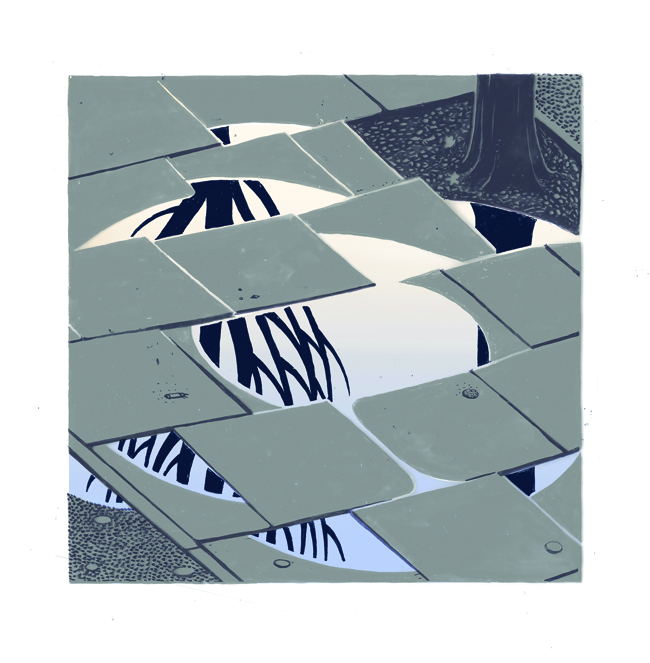
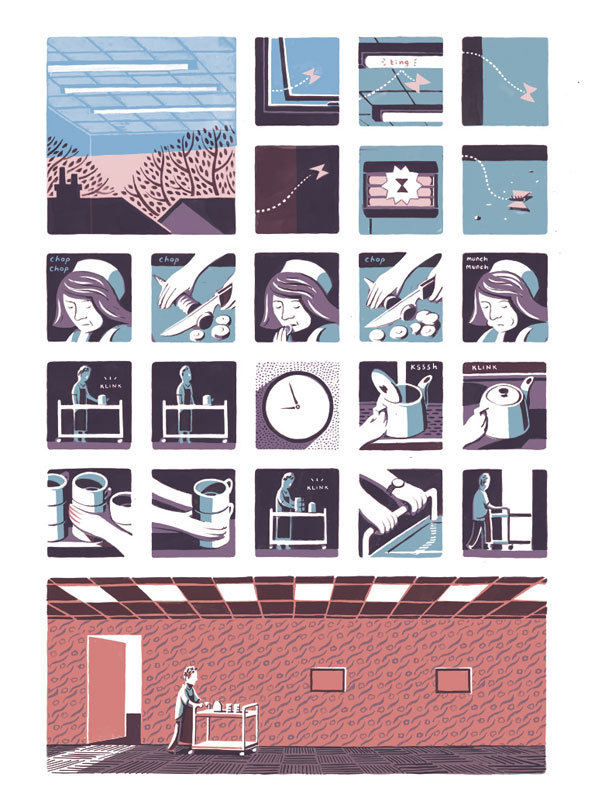
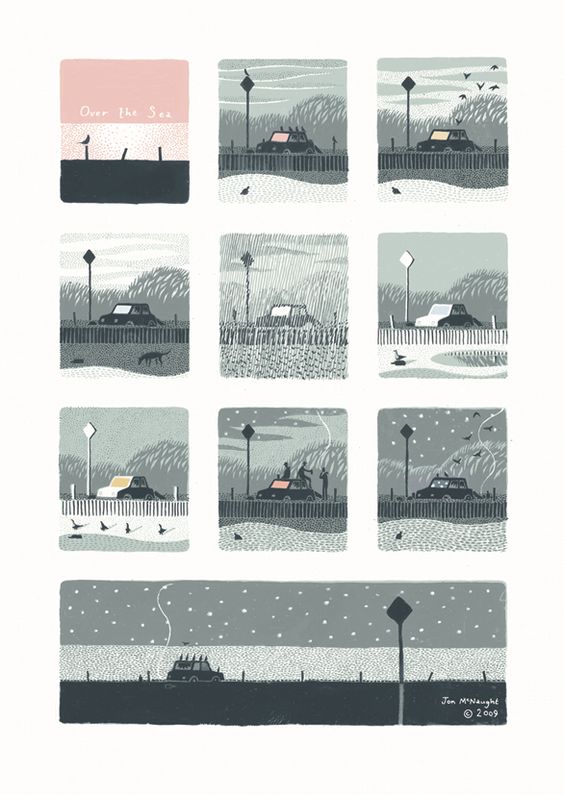
His (mostly) silent comics are almost completely void of text and convey an atmosphere that I find very appealing. It is the simplicity he uses in form and colour that resonates with me and that lead me to discover those quiet narratives that I didn’t perceive at first. By combining the visual elements with sound elements specific to the place he adds another sensory layer, which, in addition to the absence of a clear plot makes the reader feel as if he was discovering and experiencing the depicted moment.
His narratives “are less concerned with plot, drama or action than capturing melancholic moods and ephemeral plays of light and shadow, connections and contrasts between the man-made and natural worlds, and the extraordinary in the ordinary.” (Paul Gravett, 2011)
I was happy to find a video from Bezalel Academy of Arts and Design. In this workshop he talks about his background, motivation and process. I have watched it several times already 🙂
Additionally there is an interview with Paul Gravett from 2011.
Gravett, Paul (2011) John McNaught: Printing Comics [Online] May 8, 2011. Available from: http://www.paulgravett.com/articles/article/jon_mcnaught [Accessed: 21st Nov 2017]
Bezalel Academy of Arts and Design, Jerusalem (2014) [Online] March 26, 2014. Available from: https://archive.bezalel.ac.il/skn/c6/בצלאל/Search#search=05bbe54a2b9efe8ced6dd6db7792bdbe
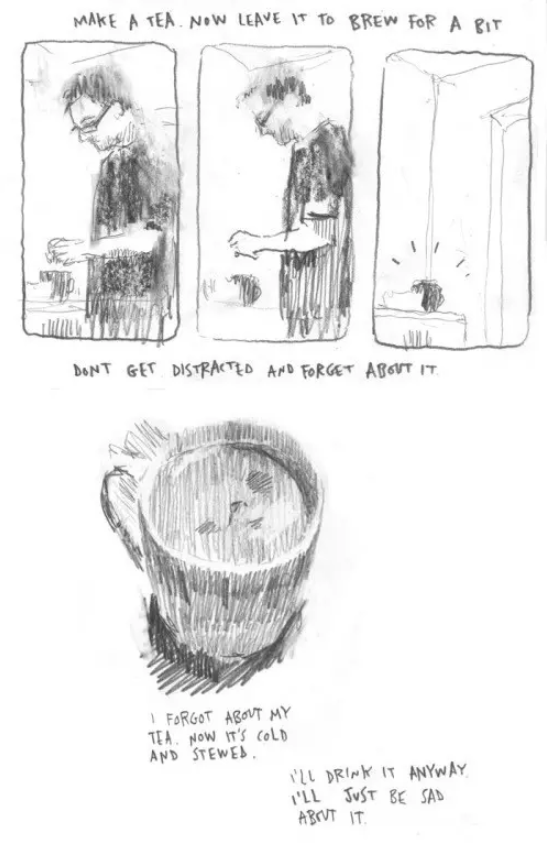
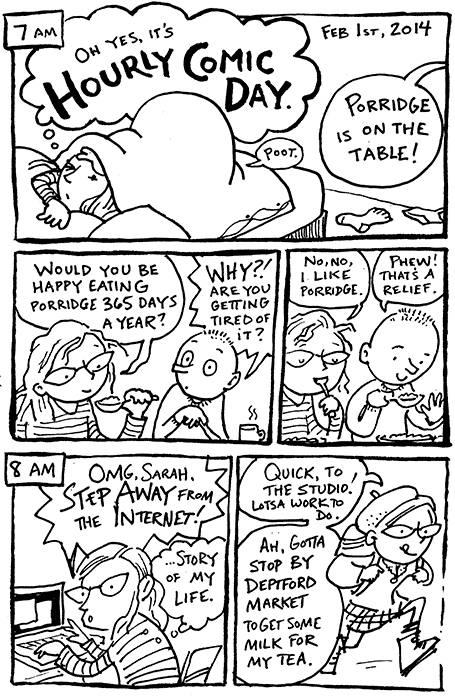
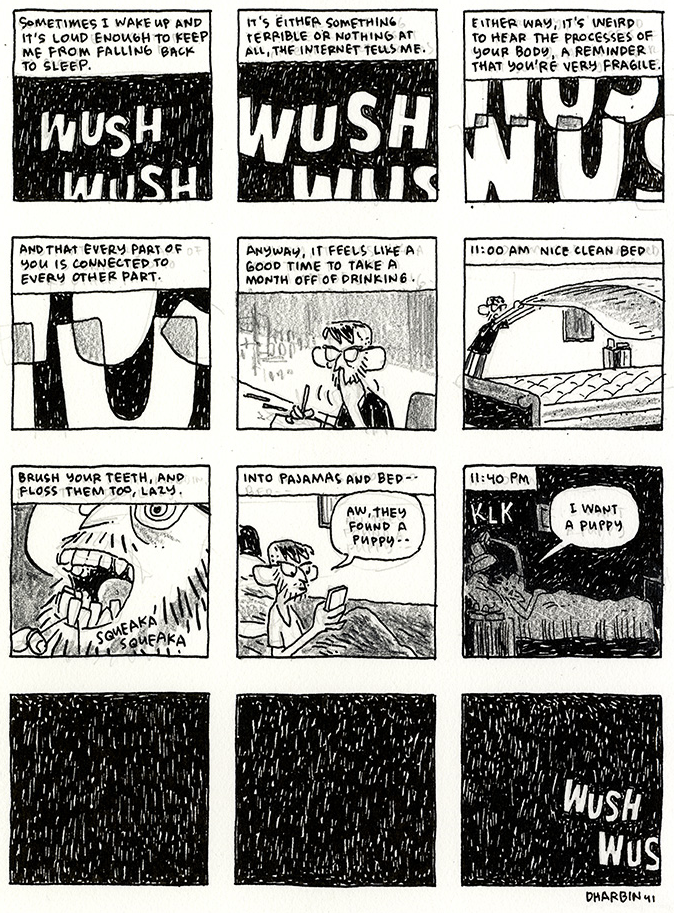 Dustin Harbin
Dustin Harbin
